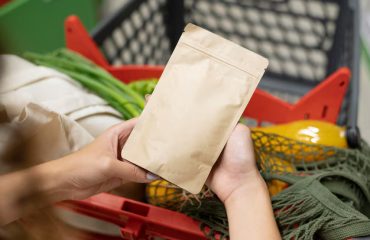Compostable vs. Recyclable Packaging: What’s Better for Your Business?

Sustainable packaging is increasingly important for businesses seeking to reduce their environmental impact. With consumer demand for eco-friendly options rising, companies are choosing between compostable and recyclable packaging. The best choice depends on factors like cost, disposal methods, and environmental benefits. Understanding these differences can guide your decisions, whether you’re sourcing biodegradable materials in Australia or looking for wholesale food packaging supplies.
Understanding Compostable Packaging
What is Compostable Packaging?
Compostable packaging breaks down into natural elements like water and organic matter in composting environments, decomposing within months, unlike traditional plastic, which takes hundreds of years.
Pros of Compostable Packaging:
- Reduced Waste in Landfills: It turns into nutrient-rich soil, decreasing landfill waste and greenhouse gas emissions.
- Made from Renewable Resources: Many materials are plant-based (e.g., cornstarch, sugarcane, bamboo), offering a sustainable alternative to fossil fuel plastics.
- Non-Toxic: It degrades naturally without polluting soil or water, unlike some recyclable plastics that can release harmful chemicals.
- Growing Consumer Appeal: More customers prefer brands that use compostable packaging due to their environmental responsibility.
Cons of Compostable Packaging
- Requires Specific Composting Conditions—Many compostable products require industrial composting facilities, which are not always available. Home composting may not effectively break down these materials.
- Higher Costs – Compostable packaging tends to be more expensive than recyclable alternatives due to raw materials and manufacturing costs.
Limited Barrier Protection – Some compostable materials may not provide the same durability and moisture resistance as recyclable plastics, making them less suitable for certain food products.
Understanding Recyclable Packaging
What is Recyclable Packaging?
Recyclable packaging is designed to be reprocessed into new materials after use, including glass, metal, paper, and certain plastics.
Pros of Recyclable Packaging
- Widespread Availability: More recycling programs exist than composting facilities, facilitating responsible disposal.
- Cost-Effective: Materials like cardboard and aluminum are affordable, reducing production costs.
- Durability: Recyclable plastics and metals provide strong protection for products.
- Resource Conservation: Reduces raw material extraction, lowering energy use and emissions.
Cons of Recyclable Packaging
- Contamination Risks: Mixing with food waste or non-recyclables can lead to landfill disposal.
- Downcycling Issues: Some materials degrade in quality after multiple recycling processes.
- Consumer Confusion: Difficulty identifying recyclable materials can result in improper disposal.
Which Option Is Better for Your Business?
The choice between compostable and recyclable packaging depends on your business model, sustainability goals, and target audience.
- Compostable Packaging is ideal if:
- Your business prioritises waste reduction and environmental impact.
- You have access to commercial composting facilities.
- You want to attract eco-conscious customers who value plant-based, biodegradable materials.
- Recyclable Packaging is ideal if:
- You need a cost-effective and durable solution.
- Your products require high-barrier protection for food safety.
- You want to leverage existing recycling systems for easy disposal.
For businesses sourcing biodegradable packaging suppliers in Australia or purchasing food packaging supplies wholesale, choosing the right packaging can enhance brand reputation and contribute to a greener future. What your packaging design says about your product plays a crucial role in shaping consumer perception, influencing purchasing decisions, and reinforcing sustainability efforts. Ultimately, both options offer significant environmental benefits, making sustainability an achievable goal for any business.
Frequently Asked Questions (FAQs)
2. What are the main benefits of compostable packaging?
- Reduces landfill waste: Compostable materials decompose into nutrient-rich soil, reducing waste in landfills.
- Renewable resources: Often made from plant-based materials like cornstarch or sugarcane, making them more sustainable than fossil fuel-based plastics.
- Non-toxic: Unlike some plastics, compostable packaging doesn’t release harmful chemicals.
- Appealing to consumers: More customers are attracted to brands that prioritise eco-friendly packaging.
3. What are the challenges of compostable packaging?
- Requires specific composting conditions: Industrial composting facilities are often necessary, and home composting may not break down these materials effectively.
- Higher costs: Compostable packaging tends to be more expensive due to raw materials and manufacturing costs.
- Limited durability: Some compostable materials may not offer the same protection (moisture resistance or barrier protection) as recyclable plastics.
4. What is recyclable packaging?
Recyclable packaging is designed to be reprocessed into new products after use. Materials like glass, metal, paper, and certain plastics can be collected and transformed into new items, conserving resources and reducing waste.
5. What are the benefits of recyclable packaging?
- Widely available recycling infrastructure: Recycling programs are more common than composting facilities, making it easier for consumers to dispose of packaging responsibly.
- Cost-effective: Recyclable materials like cardboard and aluminum are often cheaper and easier to produce.
- Durable and strong: Recyclable plastics and metals provide better protection for products, particularly food and beverages.
- Conserves resources: Recycling reduces the need for new raw materials, cutting energy consumption and greenhouse gas emissions.






You must be logged in to post a comment.